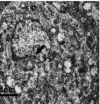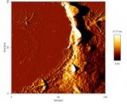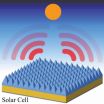(Press-News.org) DURHAM, N.C. – In a cost-effectiveness analysis of commercial diet programs and pills, the Weight Watchers program and the drug Qsymia showed the best value for the money. The Jenny Craig regimen generated the greatest weight loss, but was also the most expensive option tested, according to researchers at Duke-National University of Singapore (NUS) Graduate Medical School.
The findings, published in the June issue of the journal Obesity, provide important information on the health and weight-loss benefits per dollar spent as insurance carriers consider coverage for weight loss programs and drugs.
"The obesity epidemic is raising serious health and cost consequences, so employers and third-party payers are beginning to consider how to provide some coverage for commercial weight loss programs," said senior author Eric Finkelstein, Ph.D., professor at Duke-NUS and the Duke University Global Health Institute. "These results will help them make better purchasing decisions to maximize the health gains using available resources."
Finkelstein and research assistant Eliza Kruger first conducted a literature review to identify high-quality clinical trials of commercially available diet/lifestyle plans and medications with proven weight loss at one year or more. Weight loss was measured in terms of absolute change in kilograms lost compared to a control group in which patients underwent a low cost/low intensity intervention, or a placebo in the case of the pharmaceutical trials.
Three diet/lifestyle programs and three medications met the inclusion criteria for the cost-effectiveness analysis: Weight Watchers, Jenny Craig and VTrim, along with the diet pills Qsymia, Lorcaserin and Orlistat.
Several meal replacement products were excluded despite showing some weight loss success -- including Medifast, Optifast and Slimfast – because they did not meet one or more inclusion criteria. Weight-loss surgery was also excluded.
In terms of cost, Weight Watchers was shown to be the least expensive intervention, consisting of an average annual cost of $377. The expected annual cost for Vtrim users was $682. Because of the relatively high cost of Jenny Craig food, it was the most expensive intervention, with an annual cost of more than $2,500.
Expected annual costs for the diet pills was $1,743 for Lorcaserin; $1,518 for Orlistat; and $1,336 for Qsymia.
Average weight loss at one year ranged from 2.4 kg (about 5 pounds) for Weight Watchers to 7.4 kg (16 pounds) for Jenny Craig. Those on Orlistat lost 2.8 kg (a little more than 6 pounds) whereas those on Vtrim and Lorcaserin both lost an average of 3.2 kg (about 7 pounds). Weight loss for those on Qsymia averaged 6.7kg (a little less than 15 pounds).
Based on the cost and weight-loss data, the average cost per kilogram lost ranged from $155 per kg for Weight Watchers to $338 or more for Jenny Craig. Qsymia came in at $232 per kg.
When the analysis was extended from cost per kilogram lost to cost per quality adjusted life year saved (QALY), the researchers found that Weight Watchers and Qsymia showed the best value for money. QALYs are often used to benchmark the value of a particular health innovation, with high value interventions typically improving QALYs at a rate of $50,000 or better.
"Health policy makers do not understand value in terms of cost per kilogram lost, but if you tell them that an intervention improves QALYs at better than $50K per QALY saved, they recognize that as good value for money," Finkelstein said.
For the remaining interventions, the additional weight loss came at a price higher than what third-party payers would be likely to cover without significant cost-sharing by participants.
"Although containing rising rates of obesity is a public health imperative, employers and third-party payers remain hesitant to sink big money into commercial weight loss strategies," Finkelstein said. "But looking at cost per weight lost or QALY saved, Weight Watchers looked best because it's the least expensive. Qsymia also showed good value for money because the additional weight loss came at a fairly low cost. To remain competitive, the other programs will either need to up the benefits and/or reduce costs, perhaps through cost-sharing or via other incentive strategies."
INFORMATION:
Finkelstein has been a paid consultant for Jenny Craig, Weight Watchers, Takeda, Orexigen, and Vivus, Inc. Kruger reporter no conflicts of interest. Data used in the quality of life analysis was obtained from a previous grant from Vivus, Inc.
Study compares cost-effectiveness of weight-loss programs and drugs
2014-07-22
ELSE PRESS RELEASES FROM THIS DATE:
The nostalgia effect: Do consumers spend more when thinking about the past?
2014-07-22
Say you are out clothes shopping and you spot something that brings you back to a special time from your childhood when you were surrounded by friends and family. Suddenly, you find yourself purchasing an expensive shirt that makes you feel like a kid again. According to a new study in the Journal of Consumer Research, we're more likely to spend money when we're feeling nostalgic.
"We wondered why nostalgia is so commonplace in marketing. One reason could be that feeling nostalgic weakens a person's desire for money. In other words, someone might be more likely to buy ...
Trying to get kids to eat healthier? Don't tell them veggies are good for them
2014-07-22
At some point, most kids will hear that drinking milk helps make their bones strong or that fish is food for the brain. But do these messages foster the idea that if something is good for us, it must surely taste bad? According to a new study in the Journal of Consumer Research, when children hear about the benefits of healthy food, they're less likely to eat it.
"We predicted that when food is presented to children as making them strong or as a tool to achieve a goal such as learning how to read or count, they would conclude the food is not as tasty and therefore consume ...
You deserve it! Are consumers more likely to buy unique products when made to feel special?
2014-07-22
Graduating from college is an important life event often attributed to being smart and working hard. Many people celebrate this milestone achievement by buying themselves an expensive gift or taking a dream vacation. A new study in the Journal of Consumer Research shows that consumers who attribute their successes to internal character traits rather than hard work are more likely to select unique products.
"We found that consumers who attribute feelings of pride to their unique character traits—rather than how hard they worked to accomplish something—are more likely to ...
HIF 1α viral vector inhibits hippocampal neuronal apoptosis: The future of gene therapy
2014-07-22
Hypoxia-inducible factor 1 (HIF-1) attenuates amyloid-beta protein neurotoxicity and decreases apoptosis induced by oxidative stress or hypoxia in cortical neurons. Prof. Xiqing Chai and co-workers from Hebei Chemical and Pharmaceutical College, China constructed a recombinant adeno-associated virus (rAAV) vector expressing the human HIF-1α gene (rAAV-HIF-1α) efficiently, and tested the assumption that rAAV-HIF-1α represses hippocampal neuronal apoptosis induced by amyloid-beta protein. Their results confirmed that rAAV-HIF-1α significantly reduces apoptosis ...
Acupuncture at the Taixi activates cerebral neurons in old patients with MCI
2014-07-22
Previous findings have demonstrated that acupuncture at the Taixi (KI3) acupoint in healthy youths can activate neurons in cognitive-related cerebral cortex. In a perspective article released in the Neural Regeneration Research (Vol. 9, No. 11, 2014), Dr. Shangjie Chen and co-workers at Baoan Hospital, Southern Medical University, China investigated whether acupuncture at this acupoint in elderly patients with mild cognitive impairment (MCI) can also activate neurons in these regions. Researchers revealed that under resting state and task-related functional magnetic resonance ...
X-ray irradiation at a certain dose alters the neuronal cytoskeleton and cytomechanics
2014-07-22
Cranial radiotherapy is one of the most important therapeutic methods for the treatment of various types of primary and metastatic brain tumors. Although conventional photon irradiation has significantly improved the treatment of cancer, the central nervous system is prone to damage after high-dose irradiation, resulting in severe delayed or progressive nervous tissue injury. The issues regarding brain radiation injury have been widely discussed, and recent investigations have emphasized changes in pathomorphology. However, the underlying mechanism remains in debate. Researchers ...
Self-cooling solar cells boost power, last longer
2014-07-22
WASHINGTON, July 22, 2014—Scientists may have overcome one of the major hurdles in developing high-efficiency, long-lasting solar cells—keeping them cool, even in the blistering heat of the noonday Sun.
By adding a specially patterned layer of silica glass to the surface of ordinary solar cells, a team of researchers led by Shanhui Fan, an electrical engineering professor at Stanford University in California has found a way to let solar cells cool themselves by shepherding away unwanted thermal radiation. The researchers describe their innovative design in the premiere ...
Major dopamine system helps restore consciousness after general anesthesia, study finds
2014-07-22
Chicago – July 22, 2014 – Researchers may be one step closer to better understanding how anesthesia works. A study in the August issue of Anesthesiology, the official medical journal of the American Society of Anesthesiologists® (ASA®), found stimulating a major dopamine-producing region in the brain, the ventral tegmental area (VTA), caused rats to wake from general anesthesia, suggesting that this region plays a key role in restoring consciousness after general anesthesia. Activating this region at the end of surgery could provide a novel approach to proactively induce ...
Creating optical cables out of thin air
2014-07-22
Imagine being able to instantaneously run an optical cable or fiber to any point on earth, or even into space. That's what Howard Milchberg, professor of physics and electrical and computer engineering at the University of Maryland, wants to do.
In a paper published today in the July 2014 issue of the journal Optica, Milchberg and his lab report using an "air waveguide" to enhance light signals collected from distant sources. These air waveguides could have many applications, including long-range laser communications, detecting pollution in the atmosphere, making high-resolution ...
Has Antarctic sea ice expansion been overestimated?
2014-07-22
New research suggests that Antarctic sea ice may not be expanding as fast as previously thought. A team of scientists say much of the increase measured for Southern Hemisphere sea ice could be due to a processing error in the satellite data. The findings are published today in The Cryosphere, a journal of the European Geosciences Union (EGU).
Arctic sea ice is retreating at a dramatic rate. In contrast, satellite observations suggest that sea ice cover in the Antarctic is expanding – albeit at a moderate rate – and that sea ice extent has reached record highs in recent ...




